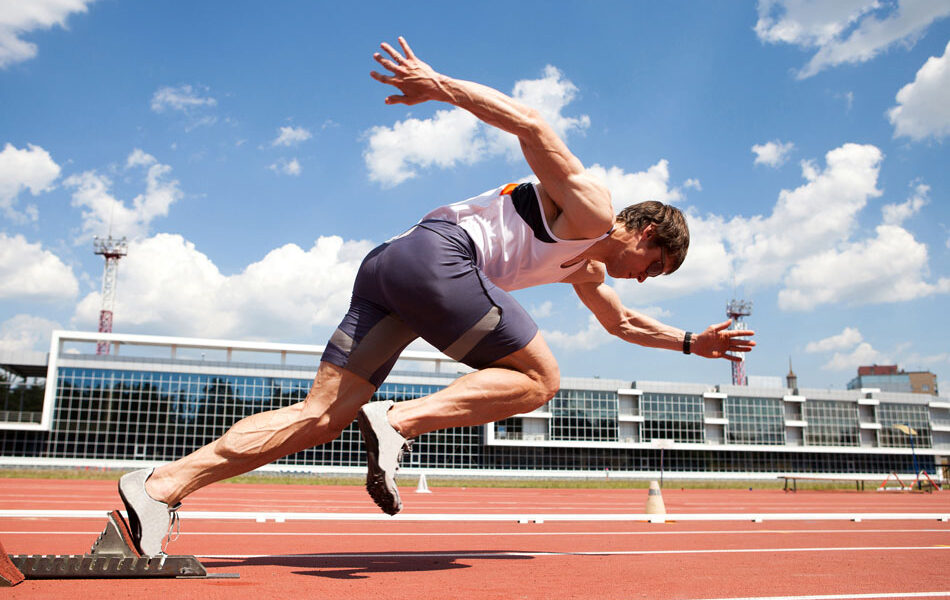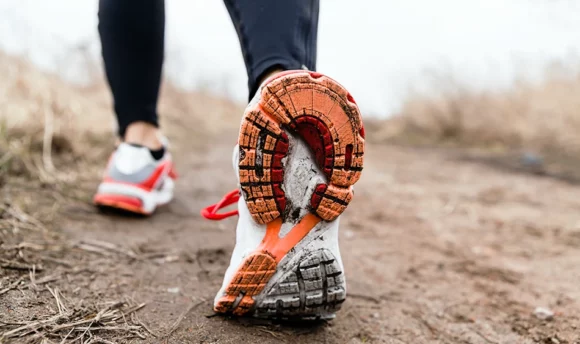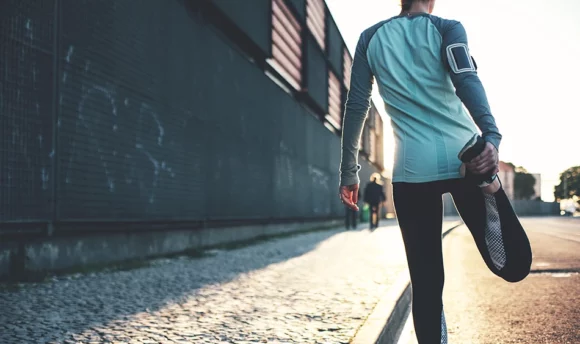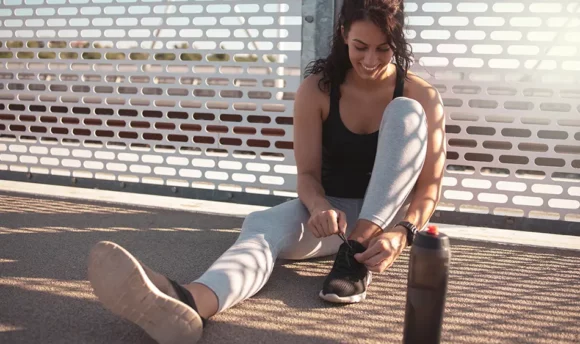Get in Shape With Running: What Muscles Does It Work?
Running is many people’s go-to exercise for building muscle and getting into shape. But can it be used as an effective full-body workout? Keep reading to find out!

Running remains one of the most accessible forms of exercise since it requires nothing more than a pair of running shoes and somewhere to run.
This high level of accessibility makes it an attractive workout for anyone wanting to lose weight and gain muscle. But those looking to benefit from the muscle-building perks of running might be left wondering which of the muscles are mostly working during a run.
To help answer this question, we’ve put together the following article, where you’ll find more information about the muscles that running works and how you can boost your muscle growth from running.
What Muscles Does Running Work?
You might be surprised to learn that running involves all major muscle groups.
The muscles in the lower body, including the gluteus maximus, quadriceps, hamstrings, hip flexors, and calf muscles, are responsible for carrying out the majority of the striding motion required while running.
As you move, your core muscles are responsible for stabilizing your trunk to minimize twisting through the spine. And your upper body muscles, predominantly your lats, shoulders, and deltoids, help you maintain proper running form to enhance running economy.
Below, we’ll dive deeper into which of the upper and lower body muscles are used while you run and provide insight into how the muscles function together.
#1 Quads
The quadricep, which is located on the front upper thigh, is made up of four muscles, the rectus femoris, vastus lateralis, vastus intermedius, and vastus medialis.
All four muscles play a major role in running and are heavily activated during early to mid-running stance – meaning the phase where your foot makes contact with the ground.
The quadricep muscles play two important roles while you run. First, they are responsible for creating a hinging through the hip and extension through the knee, thus propelling the body forward.
Equally important, the quadriceps, particularly the vastus medialis, help to stabilize the knee. Strengthening the quadricep muscles is an effective way to treat and prevent knee pain.
#2 Glutes
The gluteal muscles consist of three major muscles, the gluteus maximus, gluteus medius, and gluteus minimus. Although the glute muscles play a role in manufacturing a powerful running stride, they also take on the important task of stabilizing the torso and bones as well as joints in the upper leg.
The glutes work in combination with the abdominal muscles to support the torso during the latter part of the running movement and when both feet are entirely off the ground.
When looking at a diagram of the gluteal muscles, you’ll notice that they wrap down and around the femur, the large bone making up the thigh. Because of this, they help to support the femur and knee from caving inwards while running.
According to this study, weak glutes cause many runners’ knee pain. If you are experiencing knee or ankle pain, focusing on glute-strengthening exercises can help.
#3 Hamstrings
Three individual muscles make up the hamstrings, which are located on the backside of the upper thigh. All three muscles play an important role in everything from walking to running and are responsible for the explosive movement required when sprinting.
You use the hamstring muscles most during the latter part of the running stance. A strong contraction through the hamstring creates flexion through the knee, drawing your ankle towards your buttock after being fully extended.
Because the hamstrings are directly opposite the quadriceps, experiencing muscle imbalances in either muscle is normal, with the quadricep tending to be the more dominant muscle.
When the strength of the quadricep muscle far outweighs the hamstring, runners are at a higher risk of injury, particularly knee pain. Doing hamstring-strengthening exercises can help to prevent this sort of muscle imbalance.
#4 Hip flexors
Located on the front of the hip, the hip flexors are made up of five small but very important muscles, the iliacus, psoas, pectineus, rectus femoris, and sartorius. All these muscles are essential in supporting the body during movement.
The hip flexors are an integral part of walking and running, as they are key contributors to creating flexion in the hip, allowing you to draw your knee upwards.
But their role in running doesn’t stop there because the hip flexor muscles wrap from the low back to the top of the femur. They help to stabilize the hip and lower spine while you move and promote healthy mobility through the hip joint.
Muscle imbalances between the glutes and hip flexor muscles are common and can be caused by sitting for extended periods. Because tight hip flexors can impact running stride by inhibiting your natural gait, strengthening the glutes and stretching the hip flexors is important.
#5 Calves
There are two muscles that make up the calf muscles, which are located on the back of the shin. The gastrocnemius and soleus, which are attached to the Achilles tendon, control the ankle joint, allowing you to flex your foot and rotate your ankle.
Shin splints are running injuries caused by repetitive stress on the tibia (shin bone) and the connective tissue connecting the muscles and bones. Up to 60% of all conditions that cause pain in the legs of runners are attributed to shin splints.
Strengthening the calf muscles can help prevent this running injury by absorbing the impact of running. Strong calves propel the leg forward, creating a springier step while running.
#6 Core muscles
The abdominal muscles are commonly referred to as the core muscles, but in reality, the core muscles extend to include the glutes, lower back, diaphragm, and pelvic floor muscles. These muscle groups work together to stabilize and support the body while running.
Strong core muscles, especially abdominals, also affect your running economy for several reasons.
For starters, they prevent the torso from twisting too much while you run, helping you to generate more speed forward. Strong abdominals also enhance deeper belly breathing, which can help you draw more oxygen into your lungs with each breath, essentially fueling your movements.
#7 TFL muscle
The TFL muscle is a small muscle that rests on top of the IT band, opposite the glutes, to the outside edge of the hip flexors. It is an underrated muscle that does the important work of stabilizing the leg during movements such as walking and running.
Like the hip flexor muscles, the TFL muscle works in opposition to the glutes. It can become tight in someone who spends a lot of time sitting or has weak glute muscles. Symptoms of a tight TFL muscle include tightness in the front of the hip and pain in the knee, specifically the outer edge.
#8 Upper body muscles
Although the upper body muscles aren’t the primary muscles involved in running, they play an important role in producing a powerful stride and maintaining good running posture.
Strong latissimus dorsi and deltoid muscles help build momentum using your arms, which is especially important for sprinters. A more upright posture, as supported by active lats and shoulder muscles, will open the chest, allowing deeper breathing.
Although running isn’t a particularly effective form of exercise for strengthening the upper body, using strength training exercises can significantly improve your running performance.
What Muscles Make You Run Faster?
If you want to improve your running speed, there is no single muscle you should focus on strengthening. Bodies that are strong, flexible, and free of muscle imbalances are better set up for sprinting.
Anyone interested in increasing their running speed might consider using high-intensity resistance training or traditional strength training to strengthen their glutes, calves, and hamstrings.
Strong glutes help to stabilize the low back and pelvis while running, and the calves contribute to a lighter and bouncier stride. The hamstrings, which are essential for creating a driving force as you push off your back leg, are another muscle worth focusing on.
It’s also a good idea to pencil in some yin yoga classes. Not only does stretching feel good, but it can help you avoid tight hip flexors, which are sure to limit your full running stride.
How to Boost Muscle Gain While Running?
As mentioned in the previous section, weight-lifting is an excellent cross-training exercise for strengthening the lower body muscles. Challenging your body with a variety of running workouts like sprinting or hill repeats is another excellent way to promote muscle gain.
On your days off, be mindful of giving your body everything it needs to recover fully. Aim to meet your daily recommended amount of protein – 0.8 grams per kilo (0.36g per pound) of your body weight, and get plenty of rest to enhance muscle repair.
And don’t forget to pick up a running-specific supplement to give your body the necessary vitamins and minerals to continue building strength.
FAQs
Yes, running is a full-body workout. Although the muscles in the lower body do most of the work, your core and arms are also used for stabilization and building momentum.
Sprinting involves all the same lower leg muscles as jogging – including the glutes, calves, hamstrings, quadriceps, and hip flexors. While sprinting, you’ll likely notice a deeper activation through the core and arms as they stabilize and build momentum.
Yes. Running of any kind strengthens the legs. However, the size and strength of the muscles you build will depend on the intensity of your running workouts, with sprints being a more effective workout for sizable muscle growth.
A Word From Our Coach
Throughout this article, we’ve demonstrated the effectiveness of running in regard to building most of the primary muscles in the body. That being said, our coach team recommends combining running exercises with other strength-based workouts.
The reason is that running tends to overwork some muscles and underwork others. These muscle imbalances that running causes can wreak havoc on the joints and tendons, limit mobility, and result in poor posture.
By combining strength training with running, you can build strength in muscles like the calf muscles and glutes, which are hard to strengthen with running alone. These improvements will keep the muscle groups in balance and improve running performance.
Not only that, but you will be able to combine all of the cardiovascular benefits of regular aerobic exercise with the bone-strengthening perks of lifting weights.
Conclusion
Running impacts each muscle group differently, with the majority of the work being done by the upper and lower leg muscles. That being said, most major muscles work together to support proper running posture and enhance running performance.
Running exercises continue to be a beneficial activity for anybody looking to lose weight and develop strength. Running should be combined with strength training routines to minimize muscular imbalances and increase strength in weaker muscles.
Eating high-protein foods, doing sprinting workouts, increasing sleep, and taking a running supplement are great ways to improve the muscle growth that running can produce.

















































 Select your language:
Select your language: 








